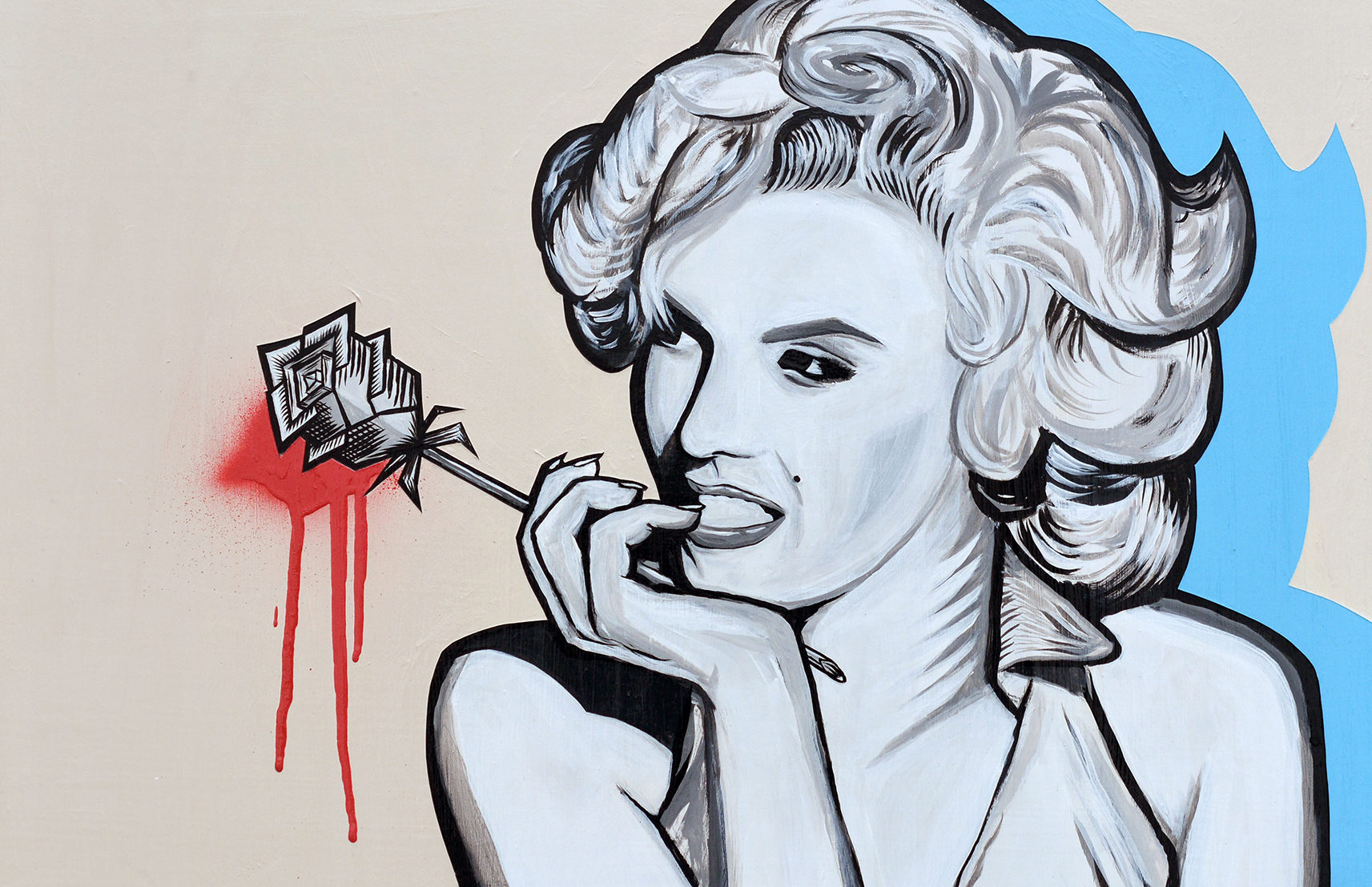‘Retro’ Offers Glimpse At Past Decades

The White Room Gallery in Bridgehampton presents “Retro,” a group exhibit focusing on yesteryear, on view through May 19. The show aims to evoke feelings of nostalgia by reviving images, styles, colors, and designs from the past.
Participating artists include David Aiazzi, Francisco Aliotta, Laura Benjamin, Stephen Bezas, John Camara, Christopher Cropper, Scott Duffy, Jackie Fuchs, Jim Gemake, Alicia Gitlitz, Kurt Gielh, Frank Gonzalez, Jackie Gordon, Timothy Gualtieri, Joanne Handler, Derrick Hickman, Teresa Lawler, Strosberg/Mandel, John Mazlish, Martha Mcaleer, Andrea McCafferty, Jim Molloy, David Morico, Kat O’Neill, Brigitte Polemis, Oz Van Rosen, Senem Sozen, Ted Stamatelos, Mike Stanko, LuAnn Thompson, and Valerie Zeman. Indy got some insight from three of the participants, Nancy Landauer, Anthony D’Avino, and Chris Tomlin.
Describe the work you’ll have on display and what inspired it.
Nancy Landauer: The collage pieces I have in the exhibit are from a series titled “Suburbia.” This series allowed me to go back and think about what life was like for my parents’ generation after the war. What was it like to jump into normal life and start a family after being a soldier? What were the expectations for marriage and family life in this newly constructed utopia?
The second series I have in the exhibit is titled “Childhood” and are composed like collages, but are completely painted in acrylic in tonal grays. This gives them a modern edge, although they are completely made up of logos and comic book characters from the 1960s — fragments of memories. My aim was to make them fun, but cool at the same time. I find that most people feel like they have seen an old friend and smile when viewing the pieces, which is really rewarding.
Anthony D’Avino: My “Walking Spaceman” is from my antique toy collection, which is in my small studio. I was a kid in the 1950s to 1960s; the room is a glimpse of a world that does not exist anymore. I was a high school student in ’64 when the Beatles showed up, and did many artworks of them. My second piece “The Beatles on Times Square” places them during their heyday. I wanted to twist it a bit and added Superman in the phone booth, Spider-Man in the billboards, myself, and so on.
Chris Tomlin: I have two portraits on display, one of Ernest Hemingway and a candid one of Marilyn Monroe. Both are painted in a high contrast of color. Ernest is complemented with an abstract background, and Marilyn is painted holding a boxed rose. My interests in portraits (in particular old golden age Hollywood) and contrasting vibrant colors steer the inspiration behind these two pieces.
Define ‘retro’ from your perspective.
NL: Each character or logo I use takes me back to a particular time in my childhood. For example, when I see Jughead, I am transported right back to sleep-away camp, to my friends, to the Berkshires, to an innocent time of great fun and joy.
AD: Retro is a relative term. More a reference to times when quality was more prevalent.
CT: Retro seems to be pretty subjective depending on who you ask. For me, it can be anything from my childhood years or anything predating that. The ’80s and a few decades before that pretty much sums it up for me.
What’s one thing from your past that no longer exists that you wish would come back?
NL: Sometimes as an artist, you don’t realize that you are conveying a particular message until the work is done. Looking back at both “Suburbia” and “Childhood,” I see a longing for a more optimistic, innocent time. Childhood today lacks the naivete we were blessed with in my generation.
AD: The ’50s was a golden time and the candy store was the epicenter of kiddom. All those great toys were there, sodas, and comics. Every season had something for kids. We were all cowboys. To this day I love Western style. That aspect shows up in my toy paintings. “America 1952” depicts me at that time.
CT: The absence of smart phones, for no other reason but for more personal interaction for everyone. It’s a gifted curse in some way. You can’t live without them, but somehow everyone did back then. This is not really shown in my work exactly, but the portrait subjects painted definitely didn’t have them.
The White Room Gallery is located at 2415 Main Street in Bridgehampton.
nicole@indyeastend.com



